It’s the time of year for saving money!
In the last several parts of this continuing series on how to get the most for your hi-fi dollar, I’ve talked about buying used (“pre-owned” is the fancier name for it) gear for your system. Unless you’re really hung-up on only buying stuff new, buying it used can — assuming that you look-out for certain problems and take certain precautions — be a really good idea; can save you a lot of money; and can, for at least certain kinds of things, get you gear that sounds fully as good as new and may have many years of service left in it.
 The things most likely to do that, I wrote, are solid-state “‘pure” electronics (things like, amps, preamps, and DACs, that have no moving parts). This is because transistors may never “wear out, whereas the vacuum tubes in tube-gear have a definitely limited lifespan and can be expensive and difficult or even impossible to replace.
The things most likely to do that, I wrote, are solid-state “‘pure” electronics (things like, amps, preamps, and DACs, that have no moving parts). This is because transistors may never “wear out, whereas the vacuum tubes in tube-gear have a definitely limited lifespan and can be expensive and difficult or even impossible to replace.
Even more than just tube electronics, the stuff most likely to fail or present a problem if bought used is anything that’s either mechanical or electro-mechanical – things like record-playing equipment (turntables, tonearms, and phono cartridges), CD and DVD players and tape recorders (which may combine either solid-state or tube electronics with their purely mechanical parts), and speakers, whose whole function is to turn an electrical signal into mechanical motion.
Of these electro-mechanical components, I’ve already taken a brief look at all but speakers in terms of what to look for and what can go wrong if you buy them used, and why you should always get a warranty of condition and service life whenever possible, even if that winds-up costing you a little extra money.
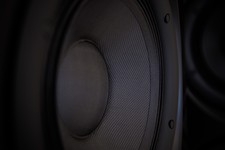 With speakers, the problems of buying used; the benefits of buying them locally; and the need for some kind of warranty, are multiplied considerably: Just the simple fact that speakers tend to be large and heavy means that, even with a money-back guarantee, if you can’t just put them in your car or truck and drive them back to where you got them, the cost of having them packed and shipped to you and then of shipping them back to the seller when you find them to be problematic can be prohibitive.
With speakers, the problems of buying used; the benefits of buying them locally; and the need for some kind of warranty, are multiplied considerably: Just the simple fact that speakers tend to be large and heavy means that, even with a money-back guarantee, if you can’t just put them in your car or truck and drive them back to where you got them, the cost of having them packed and shipped to you and then of shipping them back to the seller when you find them to be problematic can be prohibitive.
Just about anything you can think of can go wrong with speakers. Probably the most common thing for cone-type woofers and midrange drivers is failure of the “surround”, the flexible area around the diaphragm (the “cone”, usually) that both allows and limits its forward and back movement. Driver surrounds typically fall into one of four different kinds: corrugated “paper” (the paper used in speaker diaphragms and surrounds is often fiber-reinforced, and, even if not, usually bears little resemblance to the stuff we write on or wrap fish in); resin-impregnated cloth; molded butyl rubber, with (usually) a “half-round”, instead of corrugated cross-section; and molded foam rubber pieces of similar shape. Of these four, the most likely to fail is the foam rubber surround, which (unlike the other three, which tend to be much more long-lived), can “dry-out” and crumble, leaving actual gaps in the support of the diaphragm, or even — in the ultimate case — leaving the outer edge of the diaphragm just flopping loose, with no support at all. This can easily be seen in a “grille-off” close-up photo of the drivers. I’ve never heard of the “spider” (the internal part that supports and centers the voice-coil end of a cone diaphragm) failing, which is important because the spider can’t normally be seen from the outside.
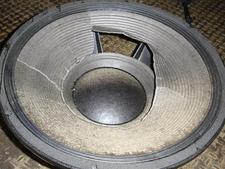 Speakers with failed surrounds can be repaired, so if you buy some used (or even if you check the speakers you own now and find that their surrounds are starting to go), check online and in the Yellow Pages for “Speaker repair” or “Speaker re-coning” and see if they can do what you need and what they will charge for it.
Speakers with failed surrounds can be repaired, so if you buy some used (or even if you check the speakers you own now and find that their surrounds are starting to go), check online and in the Yellow Pages for “Speaker repair” or “Speaker re-coning” and see if they can do what you need and what they will charge for it.
All “dynamic” drivers (the kinds with cones or domes) and most other types, too, can be “blown” by simply playing them too loud for too long a time. Under those circumstances, what normally happens is that the voice coils heat up (to red hot, even) and either burn themselves out or melt the glue that holds the coil wire to its former and it slides off, deforms, and gets stuck in the magnet gap, effectively keeping the diaphragm from moving. This is usually also repairable by the same companies that fix dead cones and surrounds.
Another thing that can affect any dynamic driver but that’s particularly damaging to tweeters (and tweeters may not be repairable) is that the amplifier driving them can, if pushed too hard, exceed its rated output, go into “clipping”, and generate a type of distorted signal curve that can destroy drivers. Surprisingly, a way to avoid clipping in amplifiers that aren’t designed with a “soft clipping” feature, is simply to use a bigger (higher output) amplifier. It’s not, in this case, the high output level that blows the drivers; it’s the particular type of waveform produced by “hard” clipping.
 Still one more thing that can happen to speakers and affect their performance and second-hand salability is the absolutely possible, but not very likely weakening of the strength of their magnet structure. When this happens, it’s usually either by overheating or by too-great proximity to other magnetic fields. Contrary to the old rumor, particularly about the Alnico 5 magnet structures predominant many years ago, it’s not likely to happen simply as a result of old age.
Still one more thing that can happen to speakers and affect their performance and second-hand salability is the absolutely possible, but not very likely weakening of the strength of their magnet structure. When this happens, it’s usually either by overheating or by too-great proximity to other magnetic fields. Contrary to the old rumor, particularly about the Alnico 5 magnet structures predominant many years ago, it’s not likely to happen simply as a result of old age.
That’s not all: Molded plastic driver “baskets” (the “frame” of the driver, that holds it all together) can break from the constant vibration of the diaphragm (I’ve seen it); that same shaking can cause internal wiring to/from the drivers or crossover to break or come undone (I’ve seen that, too); and (yes, I’ve also seen this) it can even cause poorly braced or poorly glued/assembled enclosures to open along their seams, allowing air leaks that can affect the sound – particularly in the bass – of many kinds of speaker systems.
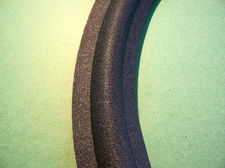 Remember that all of this is just what can happen to dynamic speakers that you might find for sale used. Much of what I’ve mentioned can be repaired, either by you or by a trained technician, but wouldn’t you rather not have to? When you’re buying used speakers, if it’s possible, audition them before buying. If you can’t do that, insist on detailed pictures of both speakers – especially the drivers and the seams – before buying. And because there are many things that can go wrong, even to speakers that you have carefully auditioned before buying (a blown tweeter or a failed crossover, or one or more failed out of several woofer drivers, might not be immediately noticeable on some kinds of music or test material) always buy from someone that you trust and always get some kind of warranty of condition and longevity.
Remember that all of this is just what can happen to dynamic speakers that you might find for sale used. Much of what I’ve mentioned can be repaired, either by you or by a trained technician, but wouldn’t you rather not have to? When you’re buying used speakers, if it’s possible, audition them before buying. If you can’t do that, insist on detailed pictures of both speakers – especially the drivers and the seams – before buying. And because there are many things that can go wrong, even to speakers that you have carefully auditioned before buying (a blown tweeter or a failed crossover, or one or more failed out of several woofer drivers, might not be immediately noticeable on some kinds of music or test material) always buy from someone that you trust and always get some kind of warranty of condition and longevity.
I’ll write more about buying other kinds (not the conventional “dynamic” types) of used speakers next time.
I hope to see you then.
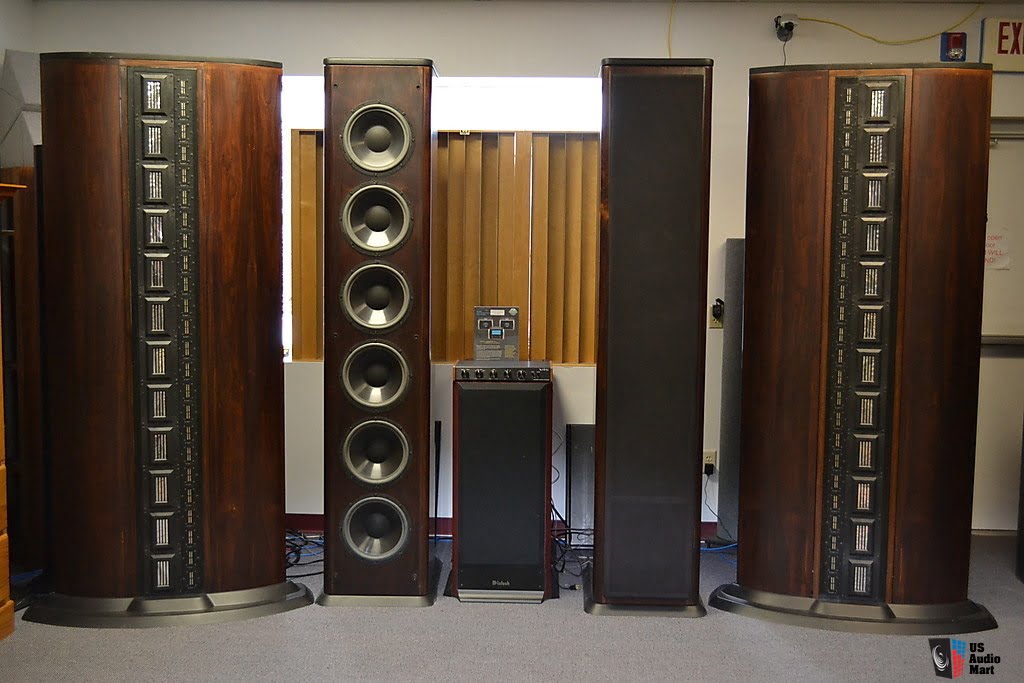
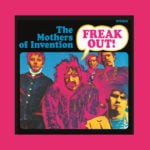







I’ve done extremely well buying used speakers on Craigslist. I understand that the speaker market in many cities is not as good as Northern California. I just looked at New York’s Craigslist speaker ads and it is not in the same league as Sacramento. I have speakers from Emptek, Klipsch, Definitive Technology, and Emotiva that I acquired for incredible bargains or for straight trades. I highly encourage this for the financially challenged. I have terrific sound for very little money.